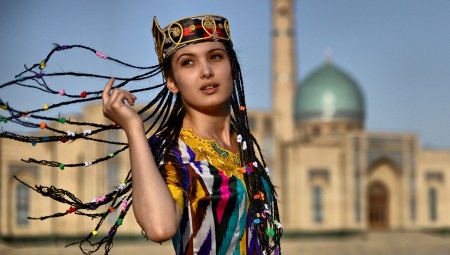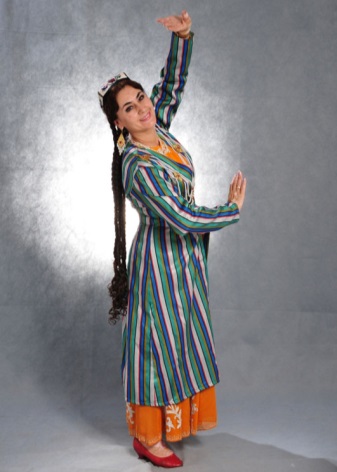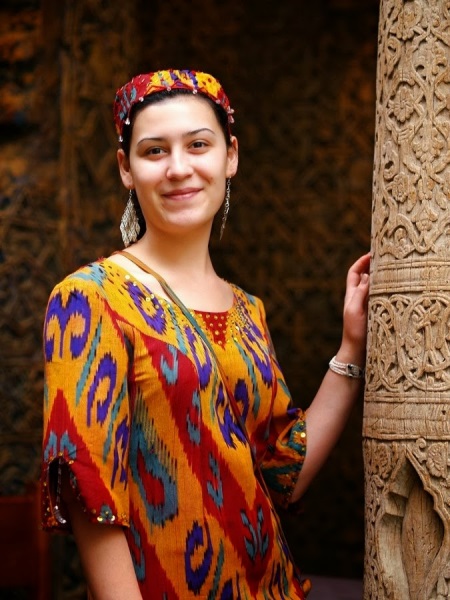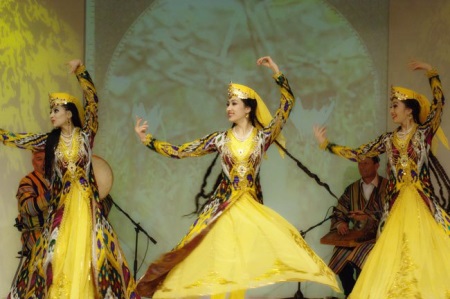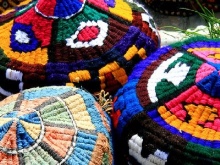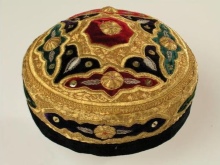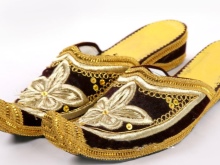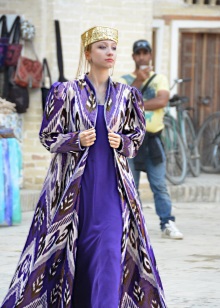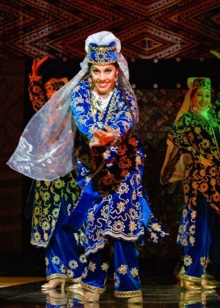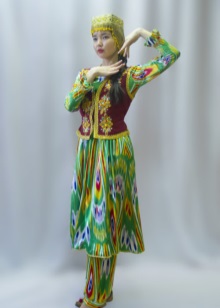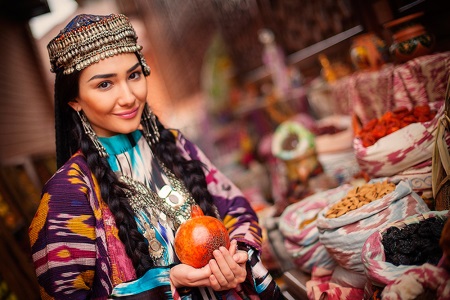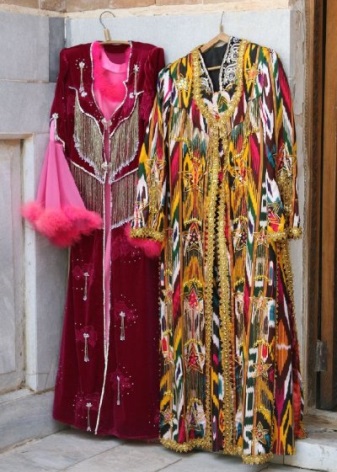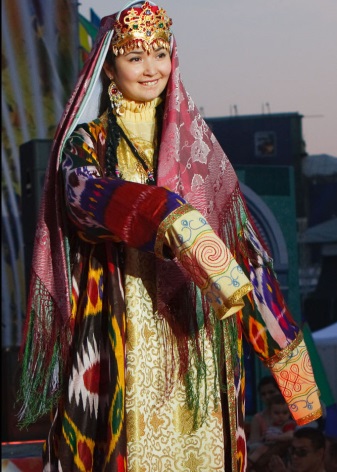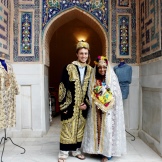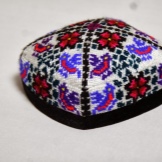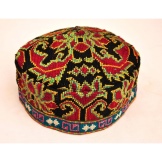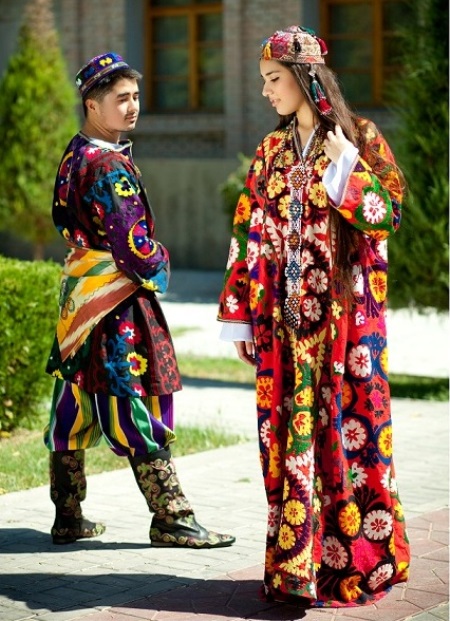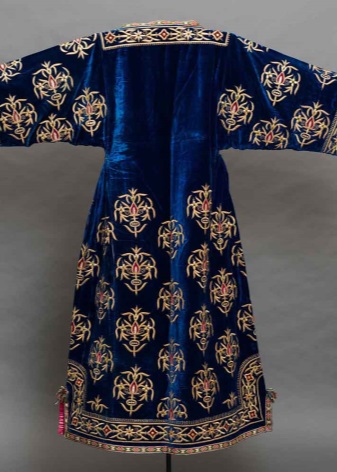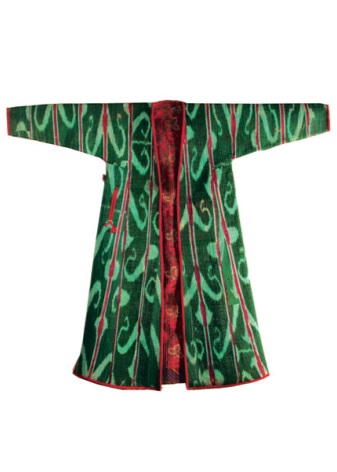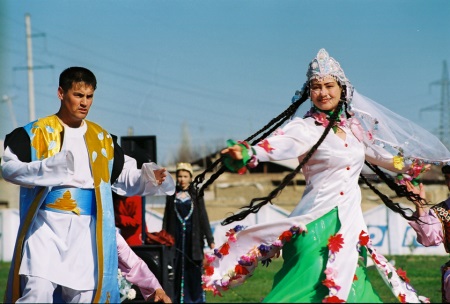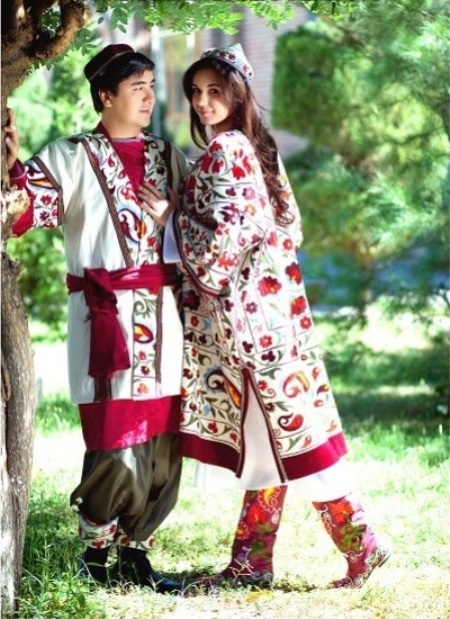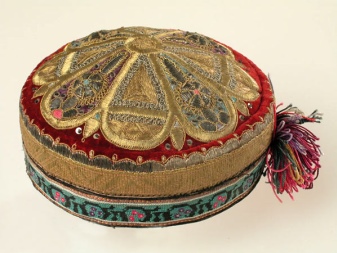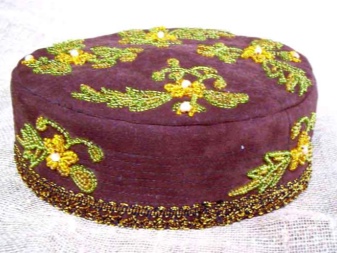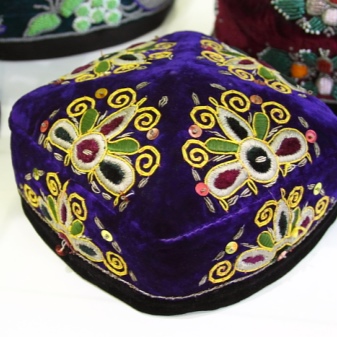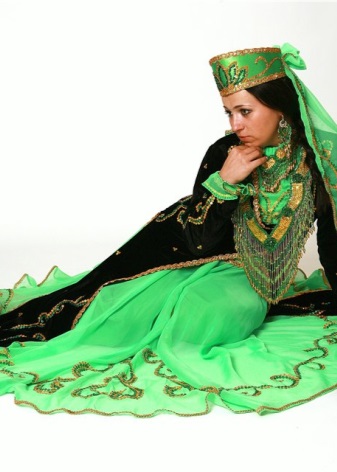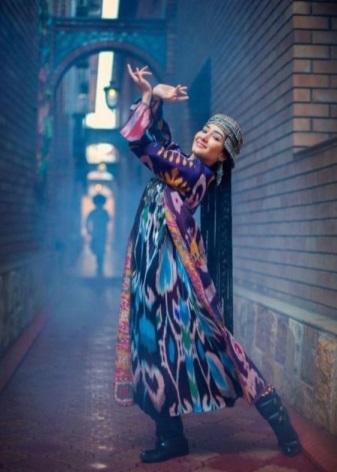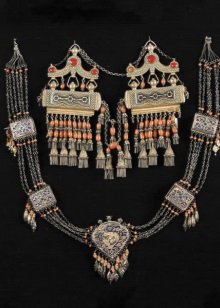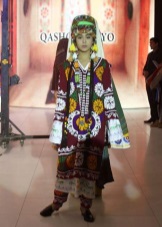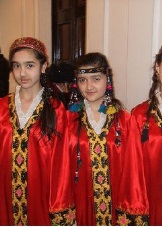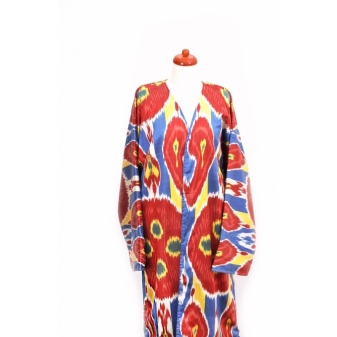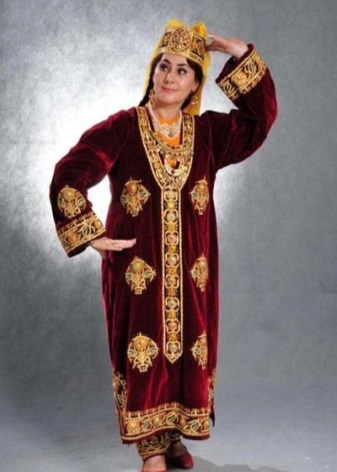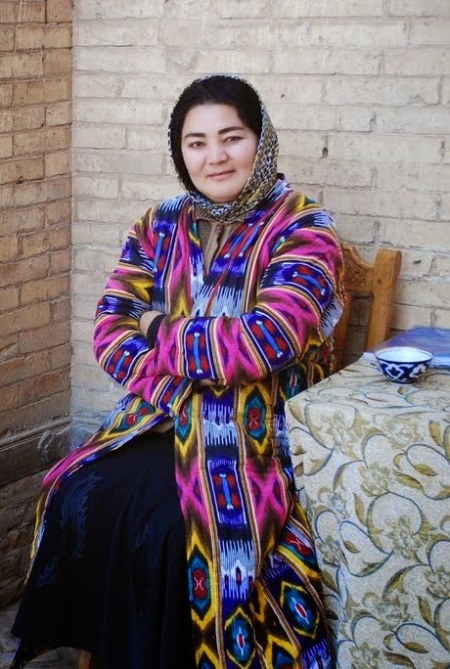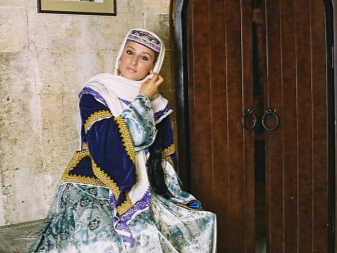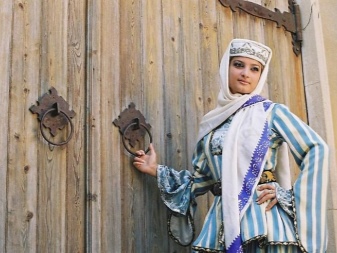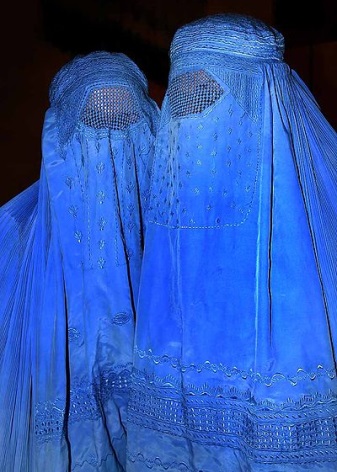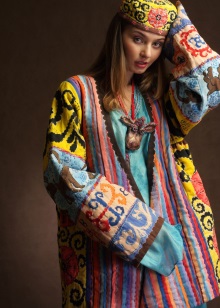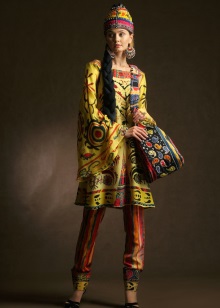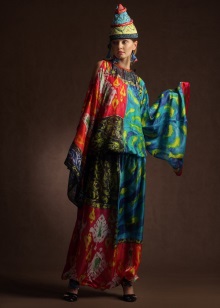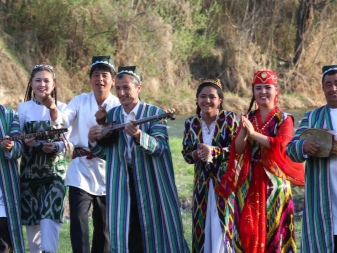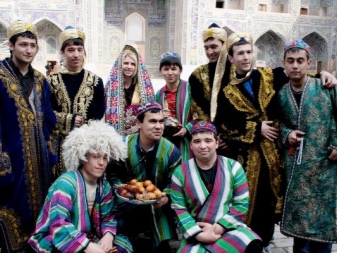Features of the Uzbek national costume
The national clothes of the people of Uzbekistan surprisingly combine the features common to all Eastern peoples and have their own individual and unique features.
Although over time, the Uzbek national costume has undergone modifications, in its modern form it has preserved all the richness of the cultural traditions of the Eastern people and the historical connection, rooted deep in antiquity.
A distinctive feature of the Uzbek costume was and remains a skillful embroidery in gold. Such outfits are typical for wealthy people. Popular were the gold embroidered Uzbek national robes, which the ruler gave to his entourage, and also received such gifts in return.
For embroidery in gold, only noble materials were used, such as silk and velvet. Patterns were embroidered mainly on plant themes, and geometric designs were rarely found in gold-embroidered outfits.
With the help of embroidery with gold thread, not only clothes were decorated, but also hats and shoes. At present, men's wedding attire in Uzbekistan is traditionally decorated with brocade with gold or silver.
The color scheme of the national Uzbek costume is quite wide. The inhabitants of different regions of the country have their own color preferences, however, the Uzbeks do not like dark clothes, because they believe that they are capable of attracting trouble.
According to the colors of the female dress, one could judge about the status of husbands. Wealthy Uzbeks dressed their wives in blue or purple dresses, the wives of artisans wore green clothes.
Another characteristic feature of the Uzbek traditional dresses is the choice of rich fabrics for sewing - velvet and velveteen.
But the cut of the costumes on the contrary is very simple and the same for male and female models. It is based on even pieces of fabric, which in some remote settlements were not even cut, but simply came off in a straight thread.
Men's national costumes in Uzbekistan
Traditional items of men's wardrobe in Uzbekistan have always been shirts of different styles and bathrobes, which are tied up with belts. At the bottom, Uzbeks wear pants and leather boots. The head in Uzbekistan must be covered not only by women, but also by men, which is connected with the Islamic religion.
In men, a turban or skullcap is used for these purposes.
clothing
A shirt for everyday wear is called kuylak. Initially, such a shirt was long and was below the knees, but later the style changed, and the shirt became a standard length. The neckline had two interpretations: in the first case, the shirt had a vertical slit to which the collar was sewn; in the second case, there was a horizontal slit in the collar area, reaching the shoulders.
Pants called Ishton were completely devoid of additional decorative and functional elements. The length of these pants, resembling trousers, reached the ankles.
The men's dressing gown is called chapan and has a uniform style for all ages and statuses, which has not changed for a long time. For different seasons of the year, there are different types of bathrobes - a thin summer gown, a bathrobe with a lining for the off-season and warm cotton bathrobes for the cold season. On the sides of the robe there are vertical cuts for easy movement.
Braid and fabric of a different color are used as decorative elements, which are sewn along the edges of the robe and on the sleeves. For closing the robe there are straps. A sash is used as a belt in national Uzbek men's suits. It is a triangle-folded cotton or silk scarf.
The color of the sash, which has the name Belbog, always chose bright and contrasting shades to make it stand out on the man's dress.
Headdress
As a headdress, men in Uzbekistan traditionally wear Kulkh or Dupe skullcap. The most popular among all skullcaps is the headdress of the inhabitants of the Fergana Valley. Its distinctive feature is an interesting floral pattern embroidered with white threads on a black background.
Today in Uzbekistan velvet or cotton skullcaps of blue, black and dark green colors are in great demand.
Traditional Uzbek clothes for women and girls
Women's national costume in Uzbekistan consists of a dress, trousers, robe, as with men, and a headdress. In addition, Uzbek girls and women adorn themselves with gold and silver jewelry. Traditional Kashgar-Boldak earrings and domed earrings, rings and bracelets are made in an exquisite Oriental style. Women wear a coral necklace or a coin necklace on their neck.
Head jewelery is another adornment of Uzbek beauties from ancient times.
clothing
Dresses from the national costume in Uzbekistan called kuylak look like a tunic with straight long sleeves and almost to the heels. Only by the beginning of the last century a small variety appeared in the styles of dresses: there could be cuffs on the sleeves or a collar could be made with a rack. For tailoring this part of the costume, noble silk and satin are traditionally used.
Female trousers were a mandatory part of the wardrobe for a girl almost from birth. As in the male version, the pants are wide at the top and taper to the bottom. The lower part of the leg is decorated with a braid with tassels.
In the female version of the national costume, the types of outerwear are slightly larger than those of men. So women can wear gowns of the same cut as a male chapan.
In some regions of Uzbekistan, long and fitted bathrobes called rumcha were distributed. Also, Uzbek women wear Mursak - something between a tunic and a bathrobe. Usually Murrasak is sewn on a warm lining for cold times, up to ankle-length and has a cut with a smell.
Less than two hundred years ago, slim bathrobes with shortened and tapered sleeves called camouflage came into use. At the same time, sleeveless jackets nimcha became popular clothing among Uzbek women.
Headdress
Women in Uzbekistan use a headscarf as a headdress. In a traditional culture, two headscarves are worn on the head at once. One of them is tied to the forehead, and the other covered. head
In the 19th century, the women's headdress was complex and multi-layered - at first a scarf was worn, which had a hole for the face, then a scarf was tied on the forehead, and a turban was constructed from above. Women from noble families wore scarves decorated with gold or silver. At the beginning of the last century, traditional Uzbek skullcaps with embroidery of silk or gold received a wide response.
When a woman went outside, she had to put a robe on her head to hide the beauty of her body from others eyes. Later, the robe was modified and turned into a burqa. At first, the sleeves of this robe were simply removed back, and later they were completely sewn together.
Mandatory attribute to the burqa was chavchans - a net woven of horsehair, which is designed to cover the face of a woman. The burqa and the people of the capital were mandatory elements of women's clothing in Muslim countries for all women and girls, starting at the age of nine.However, in Uzbekistan, this wardrobe item was distributed only in cities, and even then not everywhere. And with the advent of Soviet power, the burqa began to gradually withdraw from the everyday life of Uzbek beauties.
The role of the national costume in our day
In the modern world, the clothes of the inhabitants of Uzbekistan are quite diverse. City dwellers and some people from the village, especially for educated youth, prefer to wear modern European clothes. However, in modern attire, Uzbeks seek to bring a certain touch of details typical for their country - girls use traditional jewelry, young people can wear skullcaps.
People respect the traditions and wear the clothes of their people elderly people, especially those who do not live in the city. However, at such events as a wedding or a national holiday, the costume is still an obligatory attribute, which speaks of the rich traditions of the Uzbek people, which this people respect.
